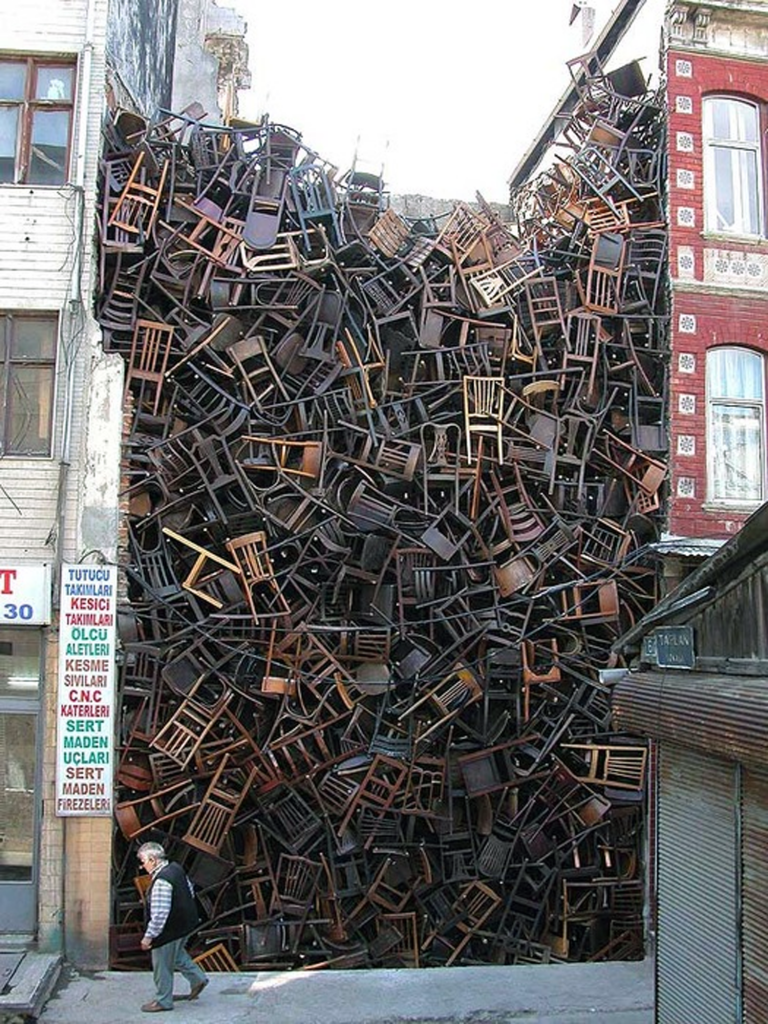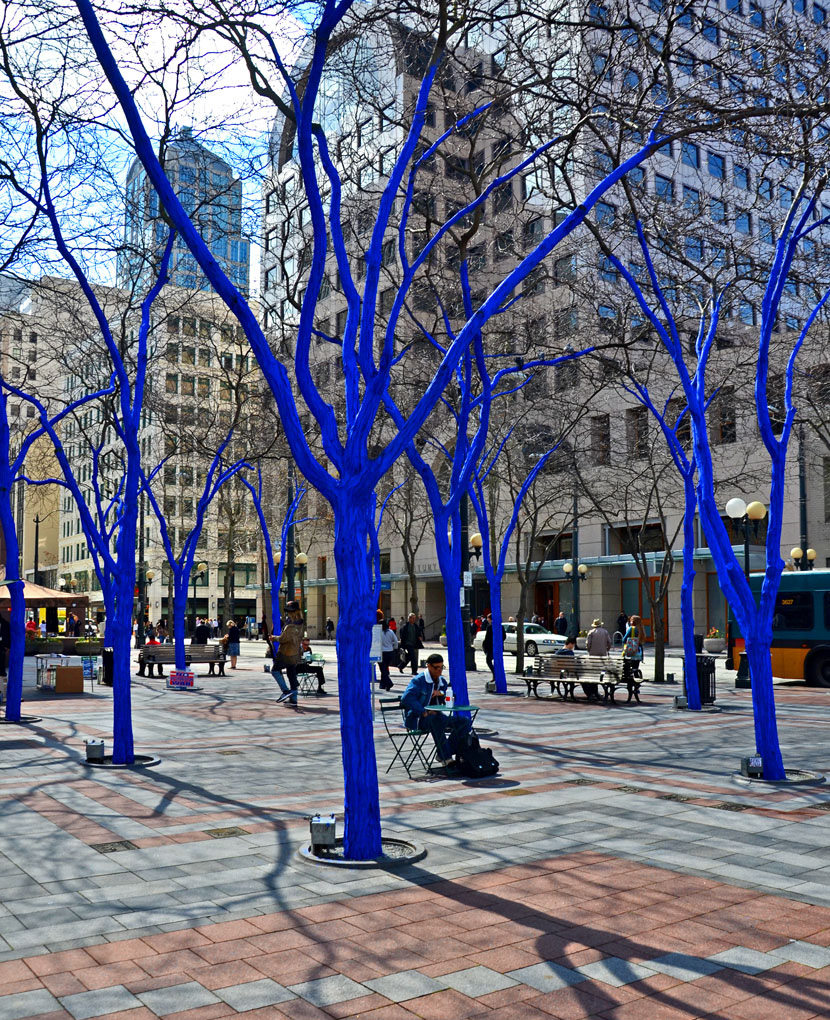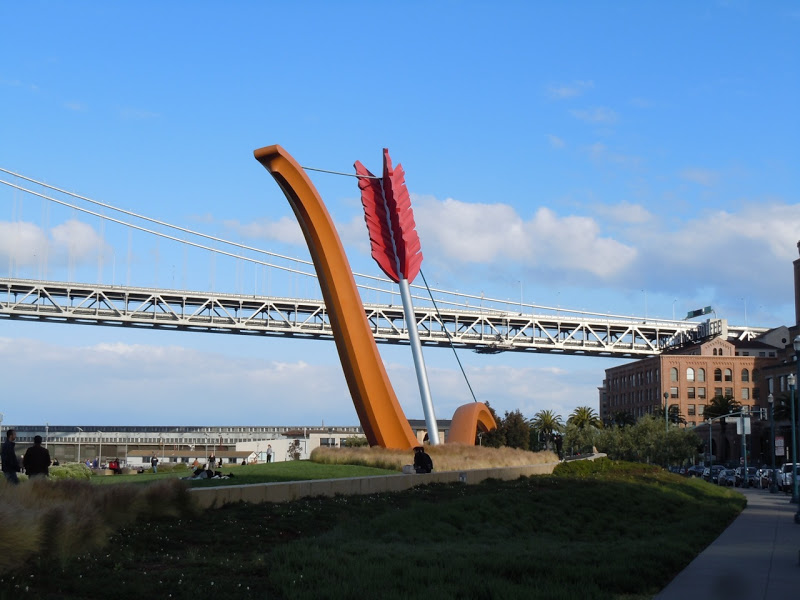Efe Korkut KURT
While they let us roam the highways freely
who can say that we aren’t monitored…
Gilles Deleuze
We don’t have a great war in our generation, or a great depression,
but we do, we have a great war of the spirit.
Fight Club, Chuck Palahniuk
We’re living in foggy times. In almost every area, the dominant, consistent, self-confident atmosphere of the modern era has been replaced by a messy, discontinuous and chaotic process. When Derrida announced the end of history, all the allegedly unchanging standards concerning aesthetic judgment had been deconstructed.* It’s said that the half-schizophrenic (if we exaggerate it a little) state of consciousness created by this fragmentation causes societies to live imprisoned in collage-cities with a sense of great ambiguity, in a physical environment that is created with a structural architecture indexed to the present (Harvey, D). Nowadays, with postmodern mechanisms and tools, masses are in the orbit of the global system, more than they’ve ever been.
In an era when some consider the current state of contemporary art practices the end of art, art is analyzed with regard to its public context and evaluated with the meanings and possibilities it may take on. In this regard, the possibility of development of a new type of public art is questioned. It may be said that a healthy instinct shows itself after such demand and search. Does this pursuit result from a confidence in the potential of the aesthetic form of art to create a “counter consciousness” in the society (Marcuse, H), and a hope that a new type of public art may help art regain such a public function so that it may be able to diffuse into the depths of the social creature (Lefeubre, H) and mine the potentials that might make this fog go away? Or does it result from the idea that it might be possible to get past the point where art got stuck in a vicious cycle by means of a new public statement? Hard to say. But we need to point out from the very beginning that even such a pursuit creates a field of resistance.

Following the first uprising of the first avantgarde artists who are considered the pioneers of today’s contemporary art against the institutionalization of art, Duchamp’s readymades have been defeated by the market mechanism through their acquisition by museums. It has also made people consider that art, which has been dignified in an autonomous area by the society, is actually an institution, thus making them realize that its (relative) ineffectiveness in the bourgeois society is its principle. Afterwards no kind of art would be able to exist in the autonomous space, because after this first avantgarde movement, every kind of art created in the bourgeois society would be left with a bitter taste in its mouth. The way of artistic storytelling that is the heritage of this (historical) avantgarde movement comprises a significant part of today’s art production. This art-style based purely on idea and action, which can be defined as an anti-aesthetic (it’s possible to say that it’s founded as a new aesthetic consciousness) attitude, is the result of a motivation to return to public sphere; and as Kuspit (2006) points out, it brings with it the danger that art might be placed in a totally-unsuitable cultural environment, thus rendering it harmonious and ineffective. According to him, by removing art from the museum, which functions as an intellectual sarcophagus, the artist becomes the representative of daily values (Kuspit, D, 2006). However the avantgarde movements of the 50s such as “fluxus” and “situationalist international” were born exactly because of this reason; they had stood against the commodification of art that was stuck inside galleries, trying to make it a part of daily life. Today, it’s said that with these ways of expression that result from “contemporary art” using communication technologies, the abyss between popular culture and cultural production becomes narrower, which is not revolutionary or avantgarde at all (Harvey, D, 2003, p.77). This brings up the harshest criticism ever made to the art of the postmodern era: a kind of art that is susceptible to becoming commodified, commercialized and giving in to the market!
However let us not forget that the same criticism was used by the pioneers of “contemporary art”; by namely the avantgarde movement, who; with the assertion that when art is distanced from daily life and practical life relationships, it becomes a part of the bourgeois culture, thus unavoidably turning into a commodity; had tried to broaden the alienating field of art and solidify its disagreement with the given reality. The quest nowadays for a new kind of public art seems to be related to this dilemma and the feeling of getting stuck. It’s because as the system of the postmodern era encourages participation and gets rid of strict mechanisms of power, it becomes easier to commodify the tools of resistance, and public control takes place at a more complex and surrounding level. In this regard it’s problematized how both contemporary artworks or events shown in public spaces and biennials, and types of public art that possess a more plastic/aesthetic quality can be included in daily practices; while on the other hand these products are maybe going to be the most powerful tools of resistance for public spaces. It’s worthwhile to carefully analyze public art in this regard.

Public space comprises every space where public opinion is formed, where autonomous politics and culture (the matrix thereof) is produced (Habermas, J, 1997). Having analyzed the historical transformation of public spaces with a thorough sociological gaze, Habermas points out that these spaces function as a balancing civilian negotiation space against mechanisms of power, thus proving how important public spaces are for a democratic social structure. However Habermas’ comprehension of public sphere as a free and autonomous space in the context of state-society separation, isn’t sufficient with regard to either its historical dimension or its existence in the circumstances of current social models. Frazer’s emphasis on the conflict within the process of the formation of today’s welfare-state model is revealing: “…as non-bourgeois masses gained access to public space, these circumstances began to vanish. Then the social problem emerged; the society became polarized with class conflicts and the public broke into groups who were fighting each other for profit. Finally, with the emergence of the mass democracy of the welfare-state, society and state intertwined; the publicity that critically questioned the state turned into demonstrations staged by means of tools of mass-communication, the creation of public opinion and the manipulation thereof.” (Frazer, 1991, p.56-80). The occurrence of the same process in Turkey was seen while public space was controlled directly by civilian/military state force during the construction of the nation-state model. Those who are happy to see the state back up from these areas should take notice what is invading these spaces.
These days, all urban spaces are considered public spaces and included in the same system of manipulation by the market. As cities themselves become a part of this mechanism of consumption and marketing, urban spaces become the target of interventions that are an extension of these marketing strategies. As the capitalistic quality of the motivation behind these interventions penetrate all the structural character and texture of the city, public spaces are constantly recreated according to the principles of postmodern city design in a superficial style. In this process of re-organization/re-creation of spaces, cities are divided into sterile spaces for consumer classes and tourists, and alienated environmental spaces. This divided structure, while creating comfortable centers for the privileged owners of the city and its global customers, requires the development of strategies that will keep the poor/lower classes out of sight. In this regard, while the utilization of space in sterilized areas*** is made in such a way that the poor folk can not take advantage of them, the attributes of the temporary or permanent cultural applications and shows in open spaces build invisible, exclusionary walls that will keep the lower classes away (Yardımcı, S).

At this point we should recall that urban architecture and urban spaces have phenomeological meanings. According to Barthes, the city speaks to its inhabitants (Barthes, R, 1999, p.210), and this also brings to mind what kind of a statement is created with this language and which equation of power the pioneering disciplines in this process of creation belong to. In this regard, it wouldn’t be an exaggeration to point out that capital imposes its symbols upon all public spheres including urban spaces with direct or indirect methods (especially by sponsoring cultural and social events), and thus dominating the public consciousness in every field of daily life. The principle of the open market concerning privatization of everything including cultural institutions may cause all artistic and cultural applications and events in public spaces to be included in this mechanism of manipulation in an unprotected way. Therefore, as public spaces lose their ideal function of being a free gathering place for different groups of the society, a place where “other” identities are wrapped in parenthesis, all the structural or artistic elements creating these spaces begin to be mediated by the bourgeois culture and capital.
The present-day art now seeks practices of inclusion in daily life. Labeled by Bourriaud as communicative art, this pursuit is of course the expression of a noteworthy pursuit in an environment where publicity becomes such an issue. But it also makes necessary the multiple-perspective evaluation of these practices with regard to the foundation of a new kind of public art. Leaving aside the question of how to overcome the workings of the aforementioned mechanism of manipulation, Harvey’s criticism of postmodern art makes visible the problem concerning the aesthetic form of art. “This fits, of course, with postmodernism’s preoccupation with the signifier rather than the signified, with participation, performance, and happening rather than with an authoritative and finished art object, with surface appearances rather than roots. The effect of such a breakdown in the signifying chain is to reduce experience to a series of pure and unrelated presents in time.” (Harvey, D, 2003, p.70). The meaning of art in these spaces loses its power to a large extent in such circumstances of discontinuity. Whereas the Greek public space (Agora) –defined by Habermas as a realm of freedom and stability against private space, and further praised by Arendt when he said it was the second area of existence where citizens seek immortality– draws its strength from this statement of permanence. When viewed with a similar analogy, Deleuze defines art as a resistance against death: “But art has something in common with the second kind of resistance to death: with the fight of humanity against death, tyranny and oppression…” (Deleuze, G). As Deleuze points out, this is, beyond the objectionable utilization of art as a counter propaganda or a counter tool of information, where the public power of art resides. This pushes us to think about the common social subconscious meanings of public space and art. It makes us think again in this context of permanence-transience, how a new kind of public art would make this extension a part of the motions of daily life and what kind of social power it could gain.

Naturally it’s beneficial to consider important the momentum created by the short-term effects of art. Because while some art movements such as “fluxus” and “situationism” have been short-lived, their influences have been permanent. Formations such as these movements possess an evolutionary essence that can be considered modernist in the postmodern era we live. Sometimes such movements emerge, well aware that they would disappear, just with the intention to shake up the “status quo”. On the other hand, marginal street art movements draw another kind of power from this transience, coming into existence as a tool of resistance similar to the production of art in an anonymous and totally-uncontrolled way. These works point out a dimension that is completely the opposite of the feeling of stability and immortality in the Greek Agora; they point out a conflicting mood, and maybe a kind of nihilism.

The various ways in which public art is applied in urban spaces, create spatial and social factors of the city with different facilities than museums and galleries. As Ergin states: “When viewed from the perspective of transience, which is the common factor in all these events, the artist has accepted in advance; at the location where he choses to make temporary use of time, space, viewer and material; to leave a mark, to take part in an intermediate process in the intervention of the space. The works, of which the spatial memory and the context of meaning hasn’t been questioned, can be nothing more than surprising discoveries for the place.” (Ergin, N, p.109) Again, according to Ergin, these interventions extend the meaning of the work; and works that question the quality of life, social sensitivity, spatial memory stand against viewers –who are not used to seeing them in urban spaces– making mandatory the intellectual analysis of imagery (Ergin, N, p.111). Marginal street art carries this attitude one step further and makes visible the social tensions and helps one see the social and spatial order of the city, by creating “counter symbols” for the divided and sterilized spaces of the city (Tanglay, Ö).
Nowadays urban spaces all over the world (including Istanbul) have been surrounded by the advertisement tools of major companies, and especially of the global capital. Having already taken over the interiors of homes with mass communication tools, this system surrounds even the things that are most difficult to capture, leaving them no way out. In this process, as all local and political authorities take side in this occupation as collaborators due to their lack of either political power or consciousness, “illegal” artistic interventions become especially important. In this process, as the nation-state model dissolves and the domination of global economy expands, the idea that public spaces become more libertarian and equilaterian in a more democratic organization, is misleading. Regardless of whether it is in the form of permanent plastic expression or different temporary application, public art should stand against this siege with its interactive, participatory and integrative qualities. Because art that doesn’t deal with this new reality, will become a part of postmodern ambiguity and won’t be able to get past being a superficial visualization. As Marcuse points out; “As a part of the established culture, art is affirmative and it supports this culture.” (Marcuse, H). The opposite of this situation can only be possible with powerful artistic expression and activity that is in accord with the ethical and social variables in the context of publicity, that is born out of the circumstances in which public art has been deconstructed.
(1) The starting point is Derrida’s idea that a society without memory (unaware of its history) is a society without identity, and thus rampant. Therefore, this emphasis on history leads to a parallel idea of deconstruction in which all settled values concerning art and aesthetics are investigated anew.
(2) Called “contemporary art”
(3) The functions of buildings in an urban area
Bibliography
- HABERMAS, J, (1997), The Structural Transformation of the Public Sphere, İletişim Publishing, İstanbul
- ARENDT, H, (1994), The Human Condition, İletişim Publishing, İstanbul
- FRAZER; N, (2004), Rethinking the Public Sphere: A Contribution to the Critique of Actually Existing Democracy, Public Sphere, p.103-133, Hil Publishing, İstanbul
- YARDIMCI, S, (2005), Küreselleşen İstanbul’da Bienal Kentsel Değişim ve Festivalizm,
- İletişim Publishing, İstanbul
- ERGİN, N, (2005), Kamusal Alanda Geçici Sanatsal Uygulamalar, Sanat ve Sosyoloji,
- p.109-119, Bağlam Publishing, İstanbul
- TANGLAY, Ö, (2005), Kentsel Dışavurumun Sınır Tanımaz Halleri: Sokakların İç
- Sesleri, Planlama, İstanbul
- BÜRGER, P, 2003, Theory of the Avant-Garde, İletişim Publishing, İstanbul
- ÖZBEK, M, (2004), Kamusal Alan, Hil Publishing, İstanbul
- HARVEY, D, 2003, The Condition of Postmodernity, Metis Publishing, İstanbul
- KUSPIT, D, 2006, The End of Art, Metis Publishing, İstanbul
- BARTHES, R, 1999, Göstergebilimsel Serüven, YKY, İstanbul
- DELEUZE, G, What is the Creative Act?
- MARCUSE, H, Art as a Form of Reality
- LIND, M, 2005, Mekânın Gerçekleştirilmesi: Oda Projesi Vakası, Siyahî Magazine issue 3,
- p.44, İstanbul
www.felsefeekibi.com/forum
